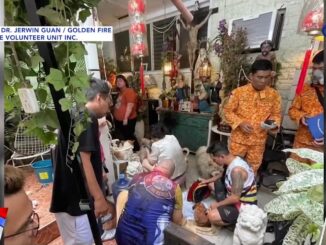
The Department of Health (DOH) over the weekend warned that it could take more than one to two weeks before leptospirosis symptoms could manifest, following the recent floods brought about by Tropical Cyclone Carina (international name: Gaemi) and the Southwest Monsoon or Habagat.
Leptospirosis, a potentially serious infection caused by wading through waters contaminated by the urine of infected animals such as rats, is caused when the bacteria enters the human body through fresh wounds or through the mouth, nose, or eyes. Symptoms include fever, nausea, dizziness, and body fatigue.
According to DOH spokesperson and assistant secretary Albert Domingo, the DOH has yet to receive reports of leptospirosis cases due to wading through floodwaters, but it could be more than two weeks before such cases are reported.
“’Yung sinasabi na incubation period, may panahon siya, bago sabihin na natin sa madaling salita, bago mahinog ‘yung sakit. Hindi siya lumalabas agad in the span of one to two weeks,” he said in Dano Tingcungco’s report on GMA’s “24 Oras Weekend” on Sunday.
(The incubation period has a time before let’s say the sickness occurs. It does not come out immediately in the span of one to two weeks.)
Domingo said the sickness is easily treatable through taking in antibiotics such as doxycycline— currently under a price freeze.
The DOH warned, however, that doxycycline should be prescribed by a doctor, and the dosage will depend upon the exposure to floodwaters. It is currently available for free in health centers and evacuation centers.
“‘Pag ang lepto, binigyan mo ng doxy na hindi naman kailangan, magiging super lepto ‘yan. Ang mikrobyo ho kasi, may tinatawag na antimicrobial resistance,” Domingo said.
(For leptospirosis cases, if doxycycline is taken when not needed, it becomes super leptospirosis. This is because the microbes have antimicrobial resistance.) — Jon Viktor D. Cabuenas/BM, GMA Integrated News





Be the first to comment